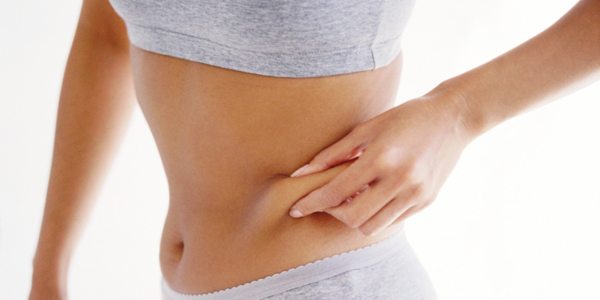Reducing Body fat: Everything You Need to Know

Reducing body fat is the ultimate goal of athletes and the gym-goers who want to put on lean muscle mass and lose weight. Having low-fat and more lean muscle mass is related to enhancing sports performance, improving overall health, and the aesthetic look. People try differnet things to lose weight including a keto diet.
Studies reveal that athletes with lower body fat percentage with more lean muscles have an advantage in their competitive sports. Additionally, studies say that maintaining an ideal body fat structure depends on the diet and activity levels. Also, one’s ability to use more calories can make him lose fat fast compared to the others. It means that if something works better for an individual, it does not mean that it would be an ideal approach to weight management for others.
I have seen people asking and Google searching so many questions on the topic of fat loss. Below are some:
- What is the best way to lose fat?
- Do dieting, and increasing exercises help in fat loss?
- Do supplements help decrease body fat?
- Why is belly fat so stubborn to lose?
Reducing body fat is not a simple task; there are many factors involved to achieve the task. According to a study presented in the Journal of Sports Medicine, weight loss requires a balanced approach to retain lean body mass. To accomplish this goal, it is better to know how fat works for the body before you want to start the reduction process.
Essential of Fat Burning
Fat reduction is quite a task for most people. You can know that by knowing that nearly 65% of the American population is overweight and obese. You cannot count sportspersons and active young people in this category, and they struggle with weight issues related to their sports.
Reducing fat is the ultimate target when it comes to weight loss for enhancing sports performance or for overall health development. There are two categories of active people who want to lose weight:
- People with the lean body but require more body fat reduction ( athletes of weight-sensitive sports)
- Obese people as per their body fat levels.
Reducing body fat and maintaining a healthy weight is a very complex process, so one must understand the concept of energy balance. In plain words, the number of calorie intake equals the number of calories burned. The simple way to understand the idea of energy balance is:
- Consuming the number of calories equals the calories burnt = No change in weight
- Eating more calories than calories burnt = Weight gain
- Consuming fewer calories than calories burnt = Weight loss
Research states that it is a dynamic process. The whole concept of energy balance depends upon the goal of an individual. Intake of calories and energy expenditure can be changed according to the specific goals.
There are several factors which can influence the energy balance:
- Total calories consumed (energy intake)
- Total calories burned ( energy expenditure)
- Macronutrients in the diet ( percentage ratio of fats, carbs, protein)
- The energy source (fats or carbohydrates)
- Thermic effect of food
- Training intensity
- Which energy used for exercises (fats or carbs)
- Type of sedentary lifestyle
Fat loss and Food
Our body uses carbs as a primary and fats as a secondary energy source. Protein plays a vital role in building and repairing muscle tissues. The balanced amount of these macronutrients, i.e., fats, carbohydrates, and protein, are crucial for overall health and fitness.
Changing the amount of these macronutrients in the diet as per energy expenditure is necessary for reducing body fat percentage. Protein, fat, and carbohydrates release different amount to calories:
| Macronutrient Type | Calories per gram |
| Protein | 4 |
| Fats | 9 |
| Carbohydrates | 4 |
So from the above table, you can understand that the food releases energy at different rates. People think that eating less fat is the best way to lose fat as it provides nine calories per gram, but it is not ideal to do that.
A balanced diet, including all the macronutrients, is vital to reduce body fat and maintain lean muscle mass. Total energy consumption in comparison to the total energy expenditure, determines if we will gain, lose, or maintain the same weight.
Studies reveal that sportspersons will have higher levels of body fat when not playing their sports. It may be due to less training or neglecting a balanced diet in the off-season. It can lead to an athlete to restrict calories when trying to prepare for the competition. But the calorie-restriction diets have shown to have negative effects on the body. So it is not considered the best method for body fat reduction.
So the athletes are recommended to have a balanced diet to lose weight gradually. All the athletes must try to maintain a well-balanced diet and training programs year-round to cut body fat.
To maintain optimal body fat levels, one must consider these questions:
- Does my weight goal have good eating habits?
- Does my weight goal promote overall health?
- Is my weight goal beneficial for my sports performance?
- Is my diet not an extreme calorie-restrictive diet?
How to Lose Body Fat Percentage With Exercise?
Studies state that body fat can be reduced by adjusting the energy consumption to the energy usages. So cutting fat or dropping body fat is a dynamic process that involves calorie intake and energy expenditure.
As per experts, the body adapts itself to the energy-burning process in the weight reduction process. This metabolic process is called thermogenesis. This can get affected by sudden weight loss. Reducing fat in this process differs from person to person and depends upon:
- Thermic Effect of Food
- Basal Metabolic Rate
- Thermogenesis (with exercises)
- Thermogenesis (non-exercise activities)
Athletes and people who want to reduce body fat are advised to watch out for the signs of weight loss plateau and adjust the intake and output of calories.
Resistance training, including weight training and strength training with proper protein consumption, can help build muscle. Protein-rich diets can help to prevent the adaption to thermogenesis, increase fat burning, and promote the feeling of fullness for a long time.
Calorie consumption and energy expenditure play a vital role in decreasing body fat percentage. Our energy system plays a major role in supporting the training. Depending upon the workout, it works either anaerobically (in the absence of the oxygen) or aerobically (in the presence of oxygen).
Our body uses carbs, fats, and stored chemicals for the workout. These energy systems can be used by our body while exercises:
Aerobic System: It is used while Low-Intensity Steady State cardio (LISS) including walking, endurance running, and jogging. The body uses carbs or fats as an energy source for the workout. It is a very complex energy system that depends on oxygen.
Phosphagen System: It is used while short interval training, which lasts up to 6 to 16 seconds, including lifting weights and sprints. In this, the body uses the creatine phosphate and adenosine triphosphate (ATP) stored in the muscles as an energy source. In this, the body does not need oxygen for the exercises, so it is termed as anaerobic.
Glycolysis System: This system provides energy for high intensity and HIIT exercises lasting from 30 seconds to 120 seconds. Energy is derived from carbs and converted into blood sugar or muscle glycogen. It is mainly an anaerobic system.
Changing training regularly to challenge these energy systems can help to reduce body fat fast. Energy expenditure depends upon the exercise intensity and the duration of a training program.
Exercises on a regular basis, increase oxygen function, which helps the body cells to burn fat quickly and efficiently.
Cutting Fat and Metabolism
Our metabolism works hard to provide energy for the needs of the body to work properly. Experts say that weight loss with calorie-restriction diets can result in impaired metabolism and, therefore, the energy expenditure.
The adaptation of thermogenesis occurs when the energy intake is severely restricted. Impaired metabolism and thermogenesis adaptation can lead to weight loss plateau, even with reduced energy consumption.
To avoid the adaptation of thermogenesis and damaged metabolism. It is advised to lose weight gradually. The best way to healthy fat reduction is done by consuming small energy deficits and tracking the progress.
Fat loss and Hormones
Hormones are essential for overall body functioning, including calorie intake and energy expenditure. Studies reveal that:
- Leptin hormone made in fat cells, it boosts energy intake and output.
- Thyroid gland hormones help boost metabolism.
- Cortisol and insulin hormones help boost metabolic function.
Related: Hunger Hormone Ghrelin
Studies say that calorie restriction can affect these hormone functions. The body tries to restrict energy expenditure, conserve energy, and boost calorie consumption. In plain words, the hormones start to work to regain the body balance; they try to conserve the energy and stimulate hunger so increase the food intake.
It is vital to have a balanced hormone function while cutting fat. It is best to cut back slightly on the energy intake for the proper functioning of the body and to get past the weight loss goal.
Unsafe Practices to Reduce Fat
People try to lose weight for their sports or to achieve desired body aesthetics. In a desperate situation, they may choose short and unsafe methods to lose weight. Severe calorie restriction, water depletion, low body fat diets are some of the common practices to lose weight among people.
Athletes of different sports, including wrestling, MMA, Boxing, Football, Bodybuilding, Distance Running, Cycling, etc. try these unsafe methods of weight loss.
Ideal Body Fat Level
Ideal body fat level differs from person to person depending upon their requirements and desires. People with fat reducing goals can take the guide from the chart prepared by the American Council on Exercise (ACE)
| Ace Body Fat Percentage Chart |
| Description | Men | Women |
| Essential fat | 2-5% | 10-13% |
| Athletes | 6-13% | 14-20% |
| Fitness | 14-17% | 21-24% |
| Average | 18-24% | 25-31% |
| Obese | 25%+ | 32%+ |
Final Thoughts
Reducing body fat is a dynamic process for people who want to lose weight. It is recommended to stay away from unsafe methods to lose weight instead focus on small calorie-deficit and monitor the progress. Fix the metabolic damage before progressing on the weight loss journey.
Maintaining the energy input and output balance is the key to have a lean body mass. Gradually decreasing body fat is essential to maintain muscles and overall health.
Read More: Lose Weight Quickly With a Keto Diet
Article References:






